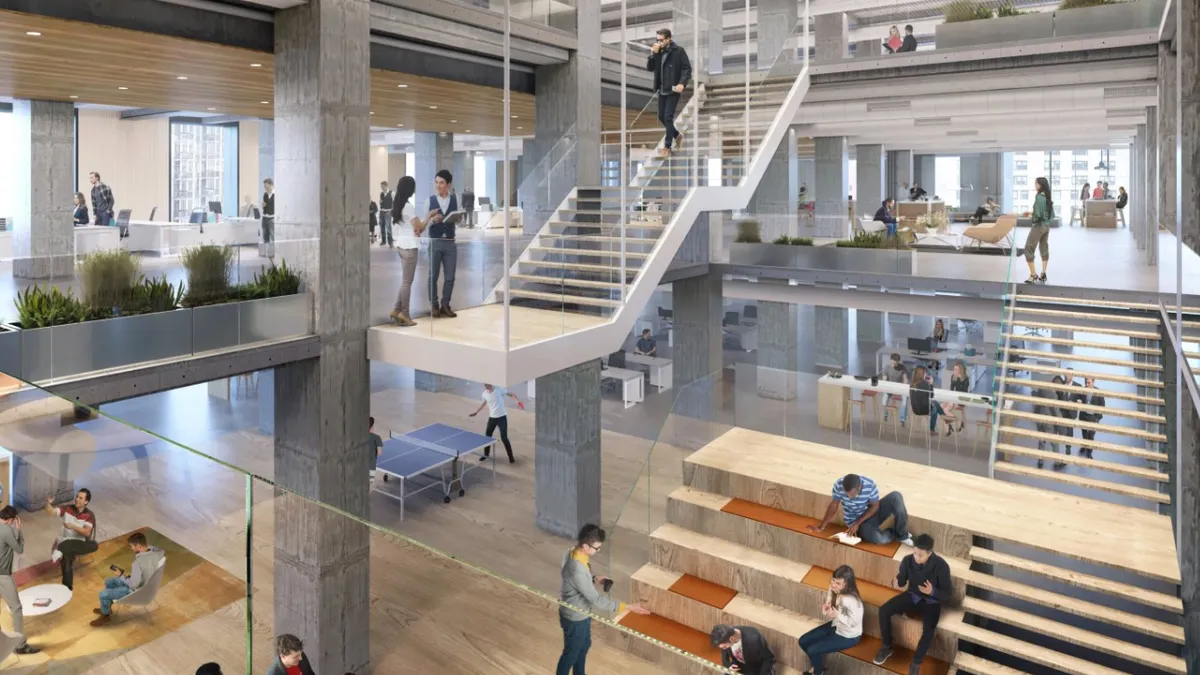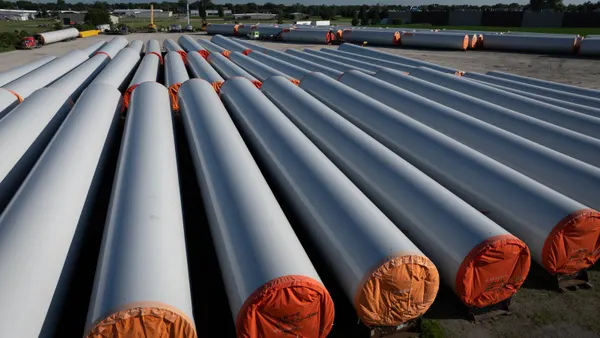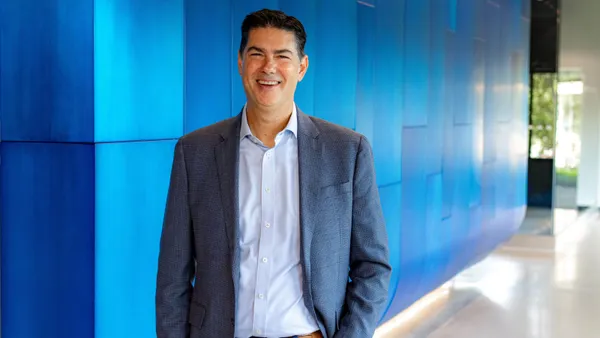Dive Brief:
- Although the coronavirus outbreak has decreased demand for office space across the country, developers broke ground this week on New York City’s largest commercial development since the pandemic hit the U.S. in March.
- When complete in 2023, the $2.3 billion One Madison Avenue office tower in Midtown South will include new retail space, an 800-person multipurpose event space, 15,000-square-foot artisanal food market, 9,000-square-foot club-style tenant lounge and full-service fitness center.
- The joint venture of SL Green Realty, Hines and the National Pension Service of Korea is developing the 1.4 million-square-foot adaptive reuse of the original 19th century structure at Madison Avenue and East 23rd Street. The 27-floor structure is being built by AECOM Tishman and will create more than 3,000 new construction jobs over the next four years, the vast majority of which will be union labor participation, according to a press release.
Dive Insight:
Despite the fact that Manhattan’s office towers remain 85% unoccupied, according to the New York Post, the One Madison Avenue development team is betting on a revival of the sector once COVID-19 has passed. The most likely tenants for the building will be technology, accounting, media, engineering and fintech firms, the Post said.
“I think 2023 is the perfect time to bring One Madison onto the market,” SL Green executive vice president and leasing director Steven Durels told the Post this week. “I think we’ll be past COVID and the economy will be in growth mode.”
Jay Badame, president of AECOM Tishman, said that the project is an example of the city’s vibrant future post-coronavirus.
“Building new office space in this part of Manhattan using the latest in design and technology – with an emphasis on providing a safe, healthy environment for the workforce – is the key to the future,” he said in the release.
Health-focused features at One Madison Avenue will include planned WELL Building and LEED-Gold certifications and the use of a dedicated outdoor air system for heating and cooling, which will circulate outdoor air throughout the building.
The groundbreaking follows a recent study by architecture firm Leo A Daly that points to how office design and construction will evolve as a result of the coronavirus pandemic. The research found that in coming months and years, more office tenants will require flexible workspaces that are designed to adapt to the number of workers on any given day, with lightweight, movable dividers instead of fixed cubicles.















